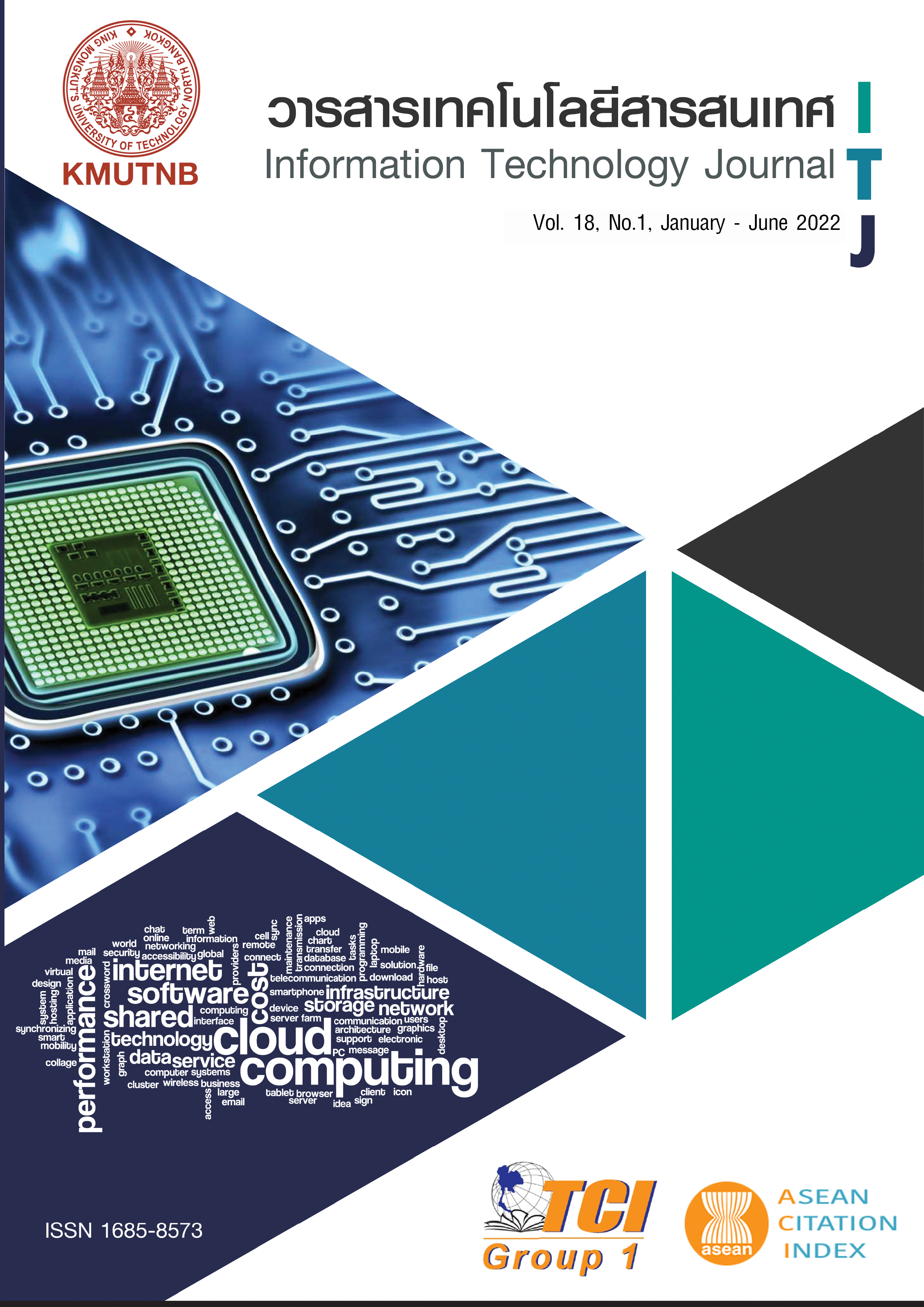The design and development of neurofeedback training program through virtual reality for acrophobia treatment
Main Article Content
Abstract
The purpose of this study is to design and develop a new classification training program (neurofeedback) and a technique for measuring anxiety With Virtual reality in people with specific phobia (acrophobia – fear of heights), and examine result of neurofeedback training by comparing pretest and posttest electroencephalographic (EEG) signal. The experiment is divided into two steps. The first step is sampling of people with anxiety score, according to Zung Self-Rating Anxiety Scale, between 45-80 points from the population of 90 persons aged between 18-22 years old. A Neurosky MindWave device is used to record EEG signal while being stimulated with height-related virtual reality. Delta, Theta Alpha, Beta and Gamma signals from the front lobe of the brain are recorded. The second step is training of the sampled group using the developed neurofeedback program ten times, for ten minutes each. Then, paired sample t-test is used to compare pretest and posttest EEG signal.
After the neurofeedback training to reduce anxiety, it is found that the Delta, Theta Alpha, Beta and Gamma EEG signals from the front lobe are reduced with statistical significance of 0.05 after being stimulated with height-related simulated environment. This exhibits benefit of neurofeedback training as able to reduce anxiety, and viability of virtual reality and neurofeedback technology as an alternative in future mental treatment.
Article Details

This work is licensed under a Creative Commons Attribution-NonCommercial-NoDerivatives 4.0 International License.
References
ผศ.ดร.จุฑารัตน์ สถิรปัญญา, สุขภาพจิต = Mental health. พิมพ์ครั้งที่ 2, ศูนย์หนังสือมหาวิทยาลัยทักษิณ, 2552.
บุญเรือง ไตรเรืองวุฒิ, “บทความกรมสุขภาพจิต กรมสุขภาพจิตเผยปัญหาสุขภาพจิตคนไทยอายุ 18 ปีขึ้นไป” Available Online at https://bit.ly/2Deh2oa, accessed on 1 March 2563.
บุญเรือง ไตรเรืองวุฒิ, “บทความกรมสุขภาพจิต กรมสุขภาพจิต เผย “ปัญหาเครียด” ครองแชมป์ปรึกษาสายด่วน 1323 ในปี 60 แนะคนทำงานใช้ 10 วิธีลดปัญหา!!” Available Online at https://bit. ly/2oBbmwY, accessed on 1 March 2563.
กองยุทธศาสตร์และแผนงานกรมสุขภาพจิต, “รายงานประจำปีกรมสุขภาพจิต ปีงบประมาณ 2562, 1 มกราคม 2563. Available Online at https://www.dmh.go.th/report/dmh/rpt_year/, accessed on 1 March 2563.
C.D. Spielberger. “Manual for the State-Trait Anxiety Inventory.” Consulting Psychology Press, Palo Alto, CA. 1983.
T. Omura, and S. Kanoh, “A basic study on neuro-feedback training to enhance a change of sensory-motor rhythm during motor imagery tasks.” 10th Biomedical Engineering International Conference (BMEiCON), Hokkaido, Japan, pp.1-5, 2017.
A. Rizzo. “Virtual Reality Exposure Therapy for Combat-Related Posttraumatic Stress Disorder.” Journal of Computer, Vol. 47, No. 7, pp. 31-37, July, 2014.
N. Zeng, and Z. Pope. “Virtual Reality Exercise for Anxiety and Depression: A Preliminary Review of Current Research in an Emerging Field.” Journal of Clinical Medicine. Vol. 7, No. 3, pp.1-13, Mar, 2018.
Riva G., and Waterworth J. A. Being Present in a Virtual World. The Oxford Handbook of Virtuality. New York, NY: Oxford University Press, 205–221. 10.1093/oxfordhb/9780199826162.013.015, 2014.
N. Zeng, and Z. Pope. “Virtual Reality Applications for the Assessment and Treatment of PTSD”. Handbook of Military Psychology: Clinical and Organizational Practice, pp. 453-471, Dec 2017.
W. WK Zung, “A Rating Instrument for Anxiety Disorders.” 12(6): Psychosomatics, pp. 371-379. 1971.
M.A. Klados, N. Pandria, A. Athanasiou, and P. D.Bamidis, “An Automatic EEG Based System for the Recognition of Math Anxiety.” 2017 IEEE 30th International Symposium on Computer-Based Medical Systems (CBMS), Greece, pp. 409-412, 2017.
J.M. Rogers., S.J. Johnstone, A. Aminov, J. Donnelly, and P. H. Wilson, “Test-retest reliability of a single-channel, wireless EEG system.” International Journal of Psychophysiology, Vol. 106, pp. 87–96, 2016.
N. Wang, Y. Wang, Y. Li, Y. Tang, and J. Wang. “Gamma oscillation in brain connectivity in emotion recognition by Granger causality.” 4th International Conference on Biomedical Engineering and Informatics, China, pp. 762-766, 2011.
N. Soontreekulpong, N. Jirakittayakorn, and Y. Wongsawat. “Investigation of Various Manipulated Music Tempo for Reducing Negative Emotion Using Beta EEG Index.” 2018 International Electrical Engineering Congress, Krabi, Thailand, pp. 1-4, 2018.
S. S. I. Aimullah., “Alpha-Band Frequency Dependency Between EEG in the Presence of Fear.” 2018 8th IEEE International Conference on Control System, Computing and Engineering (ICCSCE), Penang, Malaysia, pp.1-4, 2018.


